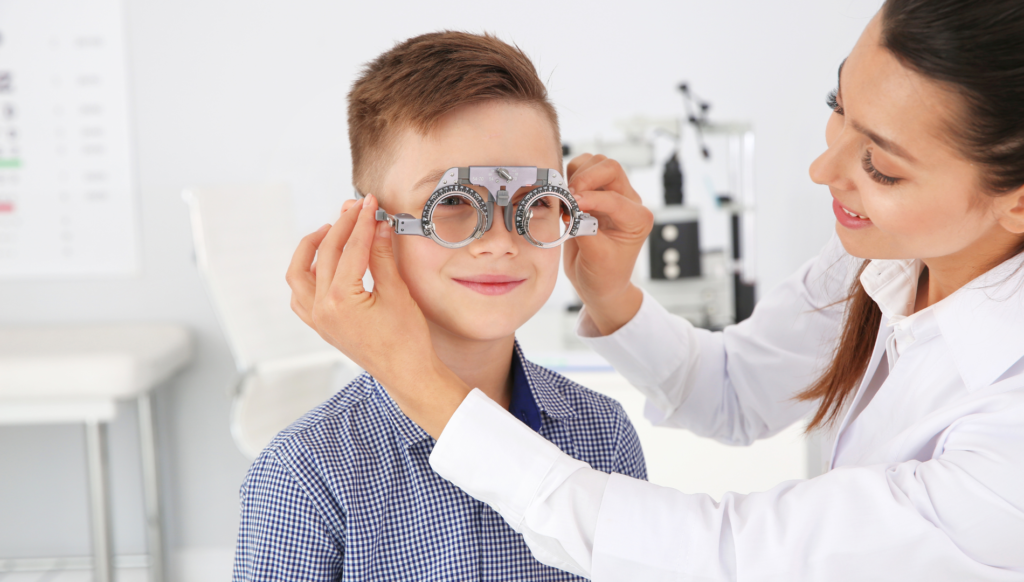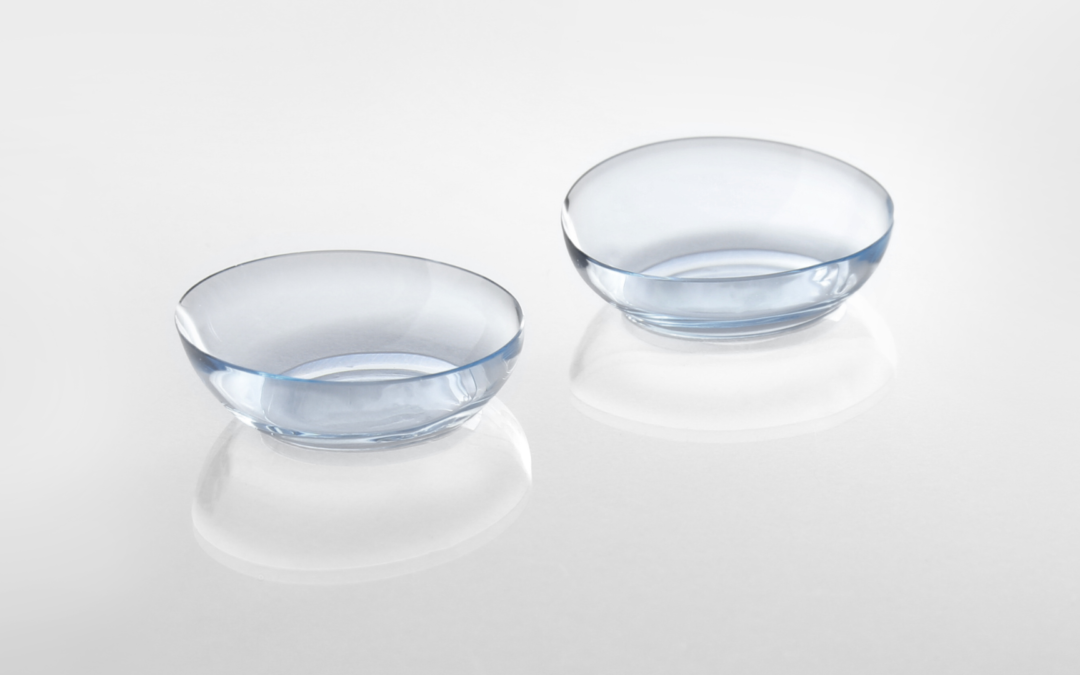Are you considering making the switch to contact lenses but find yourself overwhelmed by the variety of options available? Concept Eye Options is here to guide you through the world of contact lenses, addressing common questions and shedding light on the advantages and disadvantages of this popular eyewear choice. Let’s delve into the details and help you make an informed decision!
Understanding Different Types of Contact Lenses
- Soft Contact Lenses: Soft contact lenses are made from a flexible and breathable material, ensuring comfort throughout the day. They come in various options, including daily disposable and monthly lenses.
- Daily Disposable Contact Lenses: These lenses are designed for single-day use, offering convenience and eliminating the need for cleaning and storage.
- Monthly Contact Lenses: Monthly lenses require proper cleaning and storage but are a cost-effective option for those who need to wear lenses regularly.
- Coloured Contact Lenses: If you’re looking to change your eye colour for cosmetic reasons, coloured contact lenses can offer a temporary transformation while still correcting your vision.
- Toric Contact Lenses: Ideal for individuals with astigmatism, toric lenses have a special design that accounts for irregular corneal shape, providing clear vision for those with astigmatism.
- Myopia Control Contact Lenses: Myopia control contact lenses are a type of contact lens that is designed to slow down the progression of nearsightedness (myopia) in children and teenagers.
- Multifocal Contact Lenses: If you have presbyopia (difficulty focusing on close objects), multifocal lenses allow you to see clearly at various distances.
- Hard Contact Lenses: Also known as rigid gas permeable (RGP) lenses, hard contact lenses provide crisp vision and are suitable for certain vision needs. While they might take some time to get used to, many users find them comfortable with consistent wear.
How to Insert and Remove Contact Lenses
Inserting and removing contact lenses might seem daunting at first, especially for those who are new to wearing them. However, with a bit of practice and proper technique, the process becomes much easier. Here’s a step-by-step guide on how to insert and remove contact lenses:
Inserting Contact Lenses
- Before you begin, thoroughly wash your hands with soap and water. Dry them with a lint-free towel to ensure cleanliness.
- Check the lens for any damage or debris. Make sure it’s not inside out. A lens that’s properly oriented should resemble a bowl shape.
- Place the lens on the tip of your index finger, using your other hand’s fingers to hold your upper eyelid and lashes.
- Use the fingers of your free hand to hold down your lower eyelid, creating a space for the lens.
- Look straight ahead or slightly upward, then gently place the lens onto your eye. Try to avoid blinking as the lens touches your eye.
- Slowly release your eyelids and blink a few times. The lens should settle into a comfortable position. If the lens feels uncomfortable, use your clean finger to gently adjust it.


Removing Contact Lenses
- As always, start by washing your hands thoroughly and drying them with a lint-free towel.
- Look upward, and with your index finger, gently pull down your lower eyelid.
- Use your index finger and thumb to pinch the lens gently. If you have hard or gas-permeable lenses, they might pop out easily. Soft lenses may require a slight squeeze.
- Once you’ve pinched the lens, simply slide it down to the white part of your eye (sclera). You can then easily pick it up from there.
- If the lens is reusable, clean it as per your eye care provider’s instructions. If it’s a daily disposable lens, you can discard it.
Tips for Success
- Practice Patience: Inserting and removing contact lenses can take some practice. Be patient and don’t rush the process.
- Use a Mirror: Performing these steps in front of a mirror can be helpful, especially in the beginning.
- Relax: Relax your eye muscles while inserting and removing lenses. Tensing up can make the process more difficult.
- Follow Care Instructions: Always follow your eye care provider’s instructions for cleaning, storing, and replacing your lenses.
Addressing Common Questions
Is it Better to Wear Contact Lenses or Glasses?
The choice between contacts and glasses depends on your preferences, lifestyle, and vision needs. Contacts offer a natural field of view, while glasses can be more convenient for some.
Here are some factors to consider when deciding whether to wear contact lenses or glasses:
Your lifestyle:
- If you are active and play sports, contact lenses may be a better option for you, as they are less likely to get damaged or fog up than glasses.
- Glasses may be a better option for you if you have dry eyes or other eye problems.
Your budget:
- Glasses can be more expensive than contact lenses upfront if you factor in the cost of frames and lenses, but they may be less expensive in the long run because you will need to continuously replace your lenses.
Your comfort level:
- Some people find contact lenses more comfortable to wear than glasses, while others prefer glasses.
Your eye health:
- If you have any eye problems, such as dry eyes or allergies, talk to your eye doctor about which option is best for you
Which is Cheaper: Contact Lenses or Glasses?
The cost of contact lenses and glasses can vary depending on the type of lenses or glasses you choose, the brand, and where you purchase them. In general, glasses can be more expensive than contact lenses upfront, but they may be less expensive in the long run because you will need to replace your contact lenses continuously.
Ultimately, the best way to decide which option is cheaper for you is to talk to your optician and get a quote for both contact lenses and glasses. They can help you assess your individual needs and preferences and recommend the best option for you.
Can You Sleep with Contacts In?
While there are different types of contact lenses available, it’s generally recommended that you avoid sleeping with them in your eyes, especially if they are not specifically designed for extended wear. Standard soft contact lenses are typically designed for daily wear and are meant to be removed before sleeping. Sleeping with these lenses can lead to various eye health issues.
However, certain types of contact lenses are approved for extended wear, including overnight use. These lenses are usually made from materials that allow more oxygen to reach the cornea, reducing the risk of complications associated with wearing lenses for extended periods. If you’re interested in wearing contact lenses overnight, it’s important to discuss this with your eye care professional to determine if your eyes are suitable for such wear and to receive proper instructions on lens care and hygiene.
How Long Can You Wear Contacts?
The length of time you can wear contact lenses will vary depending on the type of lenses you wear. Here are some general guidelines:
Daily disposable contact lenses
Daily disposable contact lenses can be worn for one day and then discarded. This is the most convenient type of contact lens, as there is no need to clean or store them.
Monthly disposable contact lenses
Monthly disposable contact lenses can be worn for up to a month before they need to be replaced. They are less expensive than daily disposable contact lenses, but they require more care and maintenance.
Extended-wear contact lenses
Extended-wear contact lenses can be worn for up to 30 days without removal. However, they are not recommended for everyone, and they should only be worn under the supervision of an optician.
Are Contact Lenses Good or Bad for You?
When used as directed and properly cared for, contact lenses are safe and beneficial. However, improper use and hygiene can lead to eye discomfort or infections.
Which Contact Lenses Are Best?
The best lenses depend on your vision prescription, comfort preferences, and lifestyle. Consult with an optometrist to find the perfect fit.
Who Cannot Wear Contact Lenses?
Most people can wear contacts, but those with severe dry eyes or certain eye conditions might need an alternative solution.
Can Contact Lenses Be Worn Every Day?
Yes, many people wear contacts daily. However, adhere to the recommended wearing schedule and give your eyes periodic breaks.
It is important to follow the instructions provided by your optician and the contact lens manufacturer. If you experience any discomfort or problems with your contact lenses, remove them immediately and see your optician.
Exploring Orthokeratology (Ortho-K) Contact Lenses
Understanding Myopia Control Contact Lenses
Myopia control contact lenses, also referred to as orthokeratology (Ortho-K) lenses, present a promising avenue for managing and slowing down the progression of myopia. These specialised lenses serve a dual purpose: providing clear vision during the day and working behind the scenes to curb the advancement of nearsightedness.
How Do They Work?
Ortho-k lenses are designed to be worn overnight while you sleep. They gently reshape the cornea – the eye’s clear front surface – temporarily altering its curvature. This change in corneal shape allows light to focus more precisely on the retina, correcting the refractive error associated with myopia. It’s a bit like wearing a retainer for your eyes, but the effects are not permanent and need to be maintained through regular lens wear.
Consultation and Customisation
Before embarking on the journey of myopia control with contact lenses, it’s crucial to consult with a qualified optometrist. A comprehensive eye examination will determine the suitability of Ortho-K lenses for your eyes. Each individual’s eye anatomy is unique, and an experienced optometrist can ensure proper fitting, assess the potential risks, and guide you through the process.
Maintaining Eye Health
While myopia control contact lenses offer promising benefits, responsible lens care and eye health maintenance are paramount. Regular follow-up appointments with your optometrist will monitor the progress of your myopia control and address any concerns that may arise.
Myopia Control Lenses for Children and Teenagers
Myopia-control contact lenses offer several significant benefits for children and teenagers, making them a compelling option for managing and slowing down the progression of myopia. Here’s how these specialised lenses can positively impact young individuals:
- Slower Myopia Progression: One of the primary advantages of myopia-control contact lenses for children and teenagers is their ability to slow down the progression of nearsightedness. Research suggests that these lenses can significantly reduce the rate at which myopia worsens over time. This is crucial because high levels of myopia are associated with a higher risk of eye health complications later in life.
- Reduced Risk of High Myopia: By slowing down myopia progression, myopia control contact lenses can help reduce the risk of developing high myopia (severe nearsightedness). High myopia is associated with an increased likelihood of eye conditions like retinal detachment, glaucoma, and macular degeneration. Starting myopia control early can potentially mitigate these risks.
- Better Academic Performance: Children and teenagers often spend a significant amount of time on near tasks like reading and studying. Myopia-control contact lenses can help maintain better visual acuity for these tasks, potentially leading to improved academic performance and reduced eye strain.
- Enhanced Self-Esteem: Wearing myopia-control contact lenses can contribute to enhanced self-esteem for children and teenagers, especially those who are self-conscious about wearing traditional glasses. Clear vision without glasses can boost confidence and self-confidence during social interactions and extracurricular activities.
- Sports and Outdoor Activities: Active children and teenagers engaged in sports and outdoor activities may find myopia-control contact lenses more convenient than glasses. They offer clear, unrestricted vision without the need for eyewear that can get in the way during physical activities.
- Long-Term Eye Health: Investing in myopia control during childhood and teenage years can have long-term benefits for eye health. Slowing myopia progression can reduce the risks associated with high myopia and help maintain better overall ocular health throughout adulthood.
- Non-Surgical Approach: Myopia control contact lenses provide a non-surgical and reversible method for managing myopia. This can be particularly appealing to parents who are concerned about surgical interventions for their children.
- Personalised Care: Myopia control contact lenses are fitted and prescribed based on each child’s individual needs and eye health. This personalised approach ensures that the lenses are well-suited to the child’s eyes and lifestyle.
- Establishing Good Habits: Introducing children to proper lens hygiene, care, and routine eye check-ups through myopia control contact lenses can help instil good eye care habits that they can carry into adulthood.

Advantages and Disadvantages of Ortho-K Contacts
Advantages:
- Myopia Progression Control: One of the most significant advantages of Ortho-K contact lenses is their ability to slow down the progression of myopia, particularly in children and young adults. This can be crucial in reducing the risk of developing high myopia, which is associated with various eye health complications.
- Daytime Freedom: Ortho-k lenses provide clear vision during the day without the need for wearing glasses or regular contact lenses. This can be especially appealing for individuals who are active in sports or have professions that require unrestricted vision.
- Non-Invasive and Reversible: Ortho-k is a non-surgical and reversible option for myopia management. The effects of the lenses are temporary, and if you decide to discontinue their use, your cornea will gradually return to its original shape.
- No Age Limit: While most myopia management methods are targeted at children, Ortho-K lenses can be beneficial for individuals of various ages, making them a versatile option for myopia control.
- No Daytime Discomfort: Unlike traditional contact lenses that can cause dryness and discomfort during the day, Ortho-K lenses are worn while you sleep, eliminating any daytime discomfort associated with lens wear.
Disadvantages:
- Initial Adaptation: Adjusting to Ortho-K lenses may take some time. During the initial period, you might experience mild discomfort or blurred vision until your cornea fully adapts to the reshaping effects of the lenses.
- Maintenance and Hygiene: Proper lens care is essential to prevent infection and maintain eye health. Cleaning and disinfecting Ortho-K lenses require diligence to ensure a safe and comfortable experience.
- Risk of Infection: Like all contact lenses, there is a potential risk of eye infections if proper hygiene practices are not followed diligently. Regular cleaning, lens replacement, and adherence to the recommended wearing schedule are crucial.
- Cost: Ortho-k lenses tend to be more expensive upfront compared to standard soft contact lenses. This cost includes the specialised fitting process, lenses, and follow-up appointments.
- Consultation and Monitoring: Ortho-k requires ongoing monitoring by an eye care professional to ensure that the lenses are providing the desired effect and that your eye health is maintained. This means regular follow-up appointments are necessary.
Frequently Asked Questions
When prescribed and cared for properly, Ortho-K lenses are generally safe. Regular follow-ups with your eye care professional are essential.
The cost reflects the specialised design, fitting process, and ongoing professional care required for successful Ortho-K treatment.
Ortho-K provides temporary vision correction. If you stop wearing the lenses, your cornea will gradually return to its original shape, affecting your vision.
Missing a night of Ortho-K wear won’t cause permanent damage, but your vision might not be as clear during the following day.
Contact lenses offer a world of convenience and clear vision for those seeking an alternative to glasses. By understanding the different types, proper care practices, and benefits of contact lenses, you can confidently decide which option suits your lifestyle and visual needs. Remember, regular appointments with your optometrist are crucial for maintaining optimal eye health and ensuring your chosen lenses continue to provide the best possible vision.

